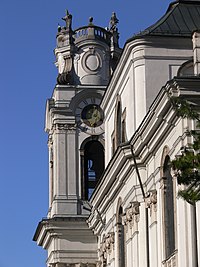Benutzer:Elisha Cohen (WMDE)/sandbox
| Elisha Cohen (WMDE)/sandbox
| |
|---|---|
 | |
| Rechtsform | |
| Sitz | a |
| Samstag, 11. Mai 2024 |
|---|

|
| Commons Uhrzeit - generiert aus Bildern dieses Sets [update](?) |
| Elisha Cohen (WMDE)/sandbox
| |
|---|---|
 | |
| Rechtsform | ssaa |
| Sitz | s |
| Raumfahrervogel | |
|---|---|

| |
| Vogel und Mond | |
| Land | |
| Raumflüge | |
| 2020 Mission | |
The night herons are medium-sized herons, 58–65 cm, in the genera Nycticorax, Nyctanassa, and Gorsachius. The genus name Nycticorax derives from the Greek for “night raven” and refers to the largely nocturnal feeding habits of this group of birds, and the croaking crow-like call of the best known species, the black-crowned night heron.[1]
In Europe, night heron is often used to refer to the black-crowned night heron, since it is the only member of the genus in that continent.
| |
Die Darstellung von Grafiken ist aktuell auf Grund eines Sicherheitsproblems deaktiviert.
function (name) ({
})

Adults are short-necked, short-legged, and stout herons with a primarily brown or grey plumage, and, in most, a black crown. This is sa sss a test. Young birds are brown, flecked with white. At least some of the extinct Mascarenes taxa appear to have retained this juvenile plumage in adult birds.
Night herons nest alone or in colonies, on platforms of sticks in a group of trees, or on the ground in protected locations such as islands or reedbeds. 3-8 eggs are laid.
Night herons stand still at the water's edge, and wait to ambush prey, mainly at night. They primarily eat small fish, crustaceans, frogs, aquatic insects, more testing here and small mammals. During the day, they rest in trees or bushes.
sasfd There are seven extant species. The genus Nycticorax has suffered more than any other Pelecaniformes genus from extinction, mainly because of their capability to colonize small, predator-free oceanic islands, and a tendency to evolve towards flightlessness.
Night Herons breed mainly in southern and southeastern Europe and migrate across the Sahara to winter in central and west Africa.[2]

Genera[Bearbeiten | Quelltext bearbeiten]
Gallery[Bearbeiten | Quelltext bearbeiten]
-
Juvenile black-crowned night heron (Nycticorax nycticorax) at Point Reyes National Seashore, California
-
Nankeen or rufous night heron (Nycticorax caledonicus) at Fremantle Harbour, Western Australia
-
Yellow-crowned night heron (Nyctanassa violacea) in Florida
-
White-eared night heron (Gorsachius magnificus)
-
Japanese night heron (Gorsachius goisagi) in Osaka, Japan
-
Malayan night heron (Gorsachius melanolophus) in Taiwan
- Test
- Test2
- Test3
References[Bearbeiten | Quelltext bearbeiten]
- ↑ Jobling, James A.: The Helm dictionary of scientific bird names : from aalge to zusii. Christopher Helm, London 2010, ISBN 978-1-4081-3326-2 (worldcat.org).
- ↑ RSPB Handbook of British Birds (2014). Vorlage:ISBN.









